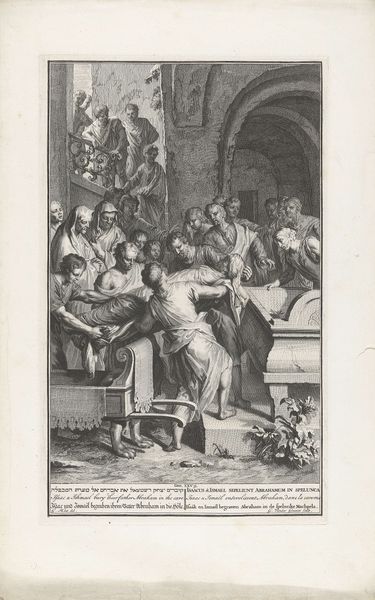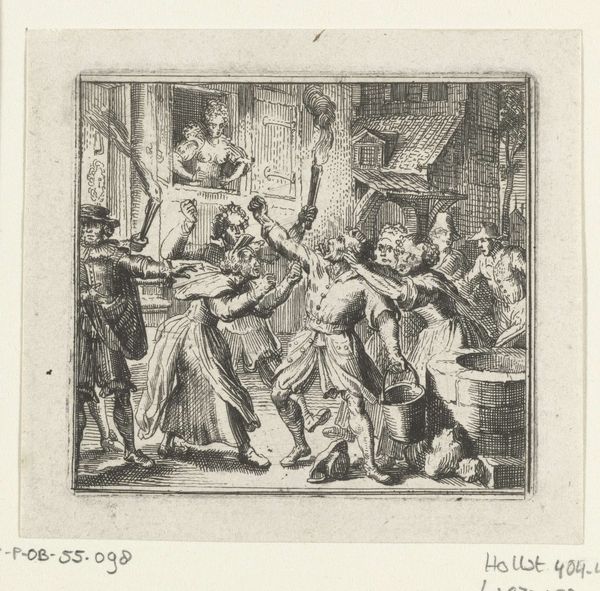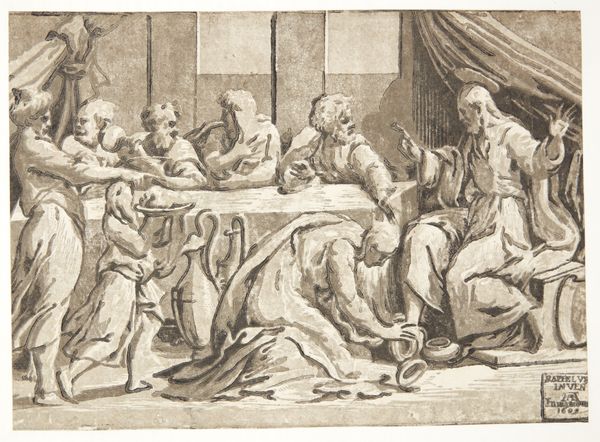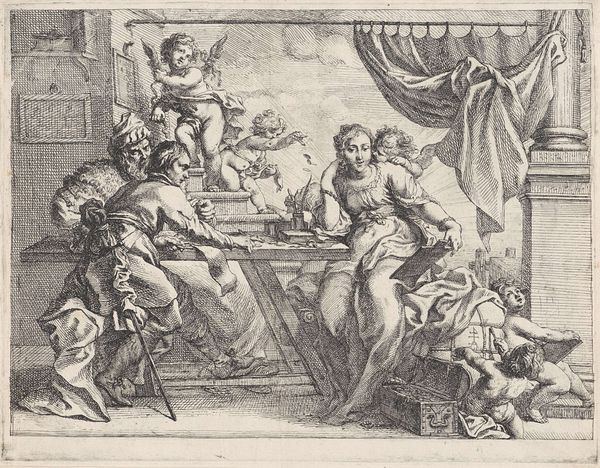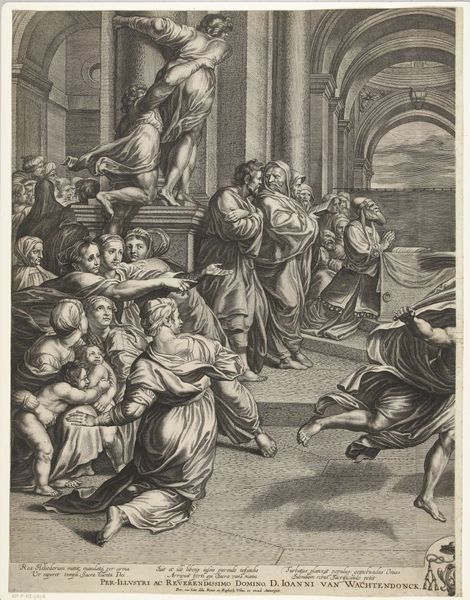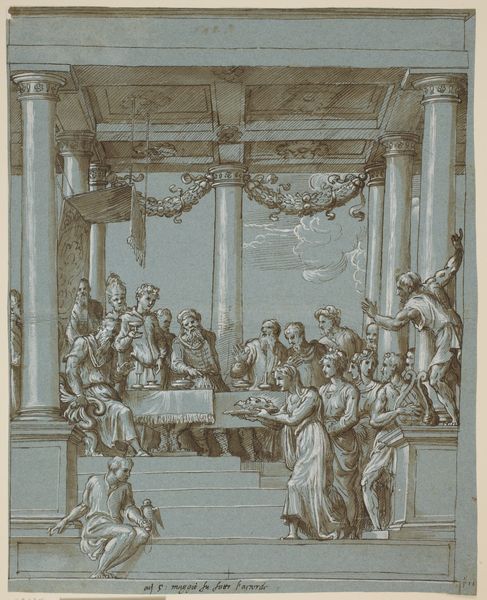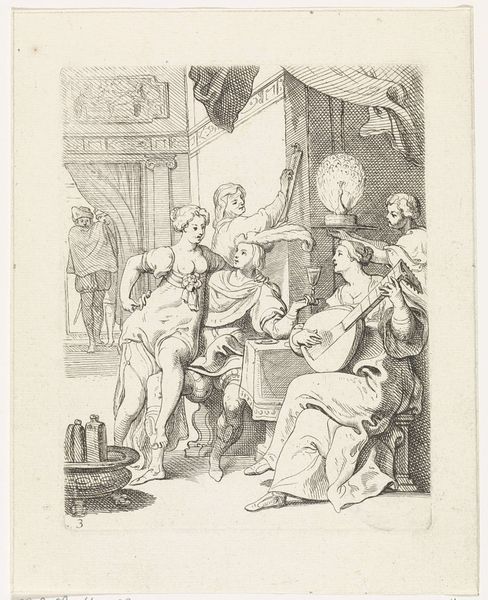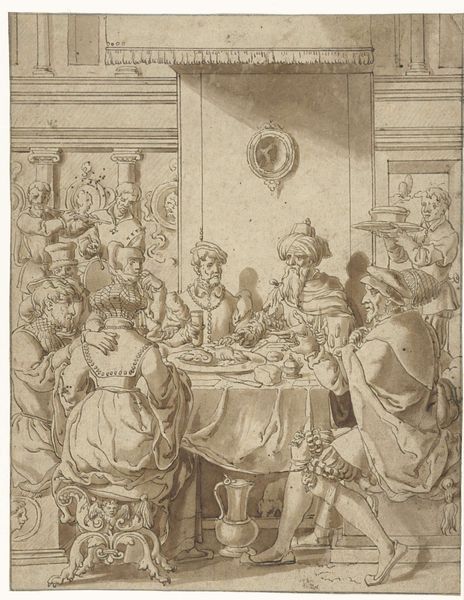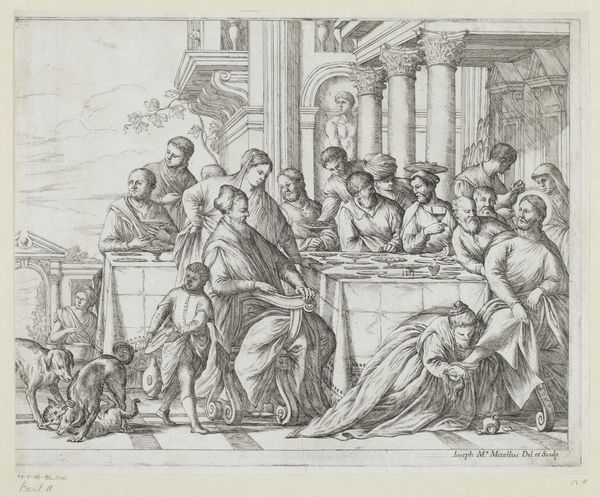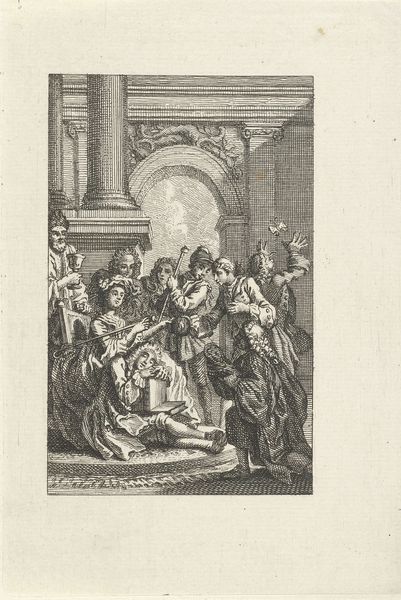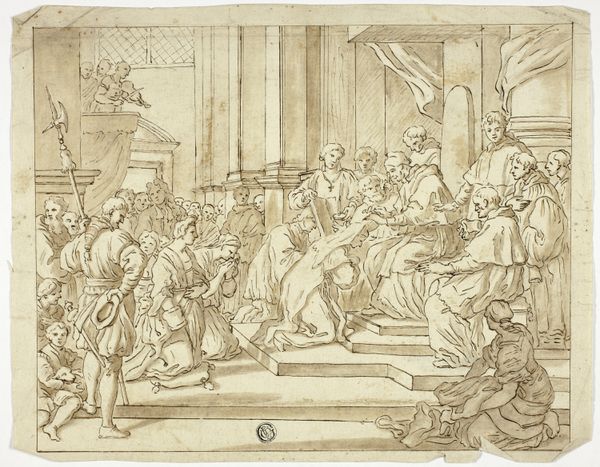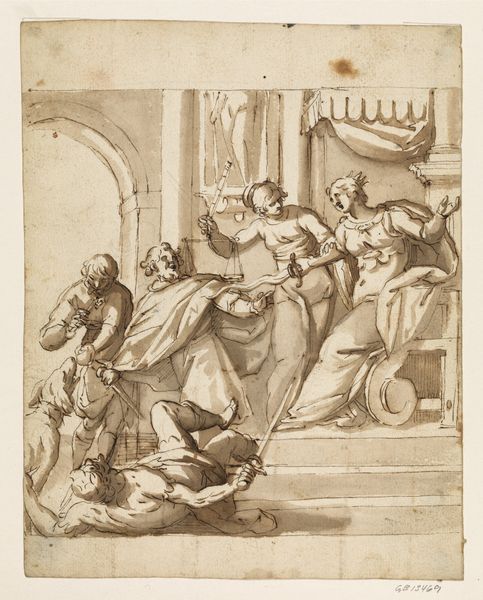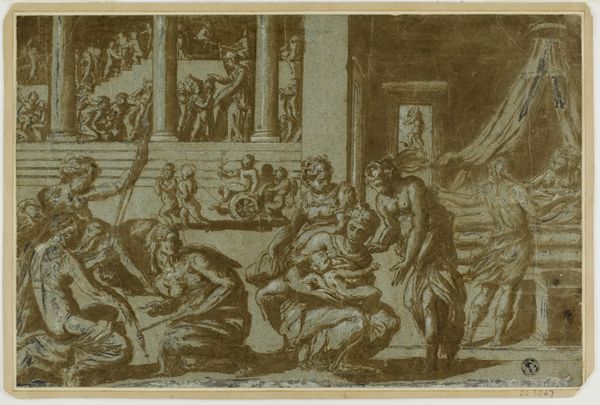
drawing, paper, ink, pen
#
portrait
#
drawing
#
narrative-art
#
baroque
#
figuration
#
paper
#
ink
#
group-portraits
#
pen
#
genre-painting
Dimensions: height 380 mm, width 380 mm
Copyright: Rijks Museum: Open Domain
Editor: This pen and ink drawing, "Kaartspelend gezelschap," or "Card Players," by Balthasar van den Bossche, from around the turn of the 18th century, presents an intimate scene of leisure. There's something performative about it. How do you interpret this tableau? Curator: This piece strikes me as more than a simple genre scene. While it depicts a leisurely card game, it's also a commentary on class and social roles in the early 18th century. Who is included, who is excluded, and how does the artist represent that dynamic? The seemingly carefree activity becomes a stage upon which power dynamics are displayed. Editor: Interesting. I see what you mean by social roles - there's the dog looking up, and the serving woman to the side... it makes me wonder if we are meant to feel like an outsider invited in to observe the group? Curator: Precisely! And that sense of observation implicates us. How does the composition - the way van den Bossche arranges the figures - reinforce those social hierarchies? Are the women and men at the card table given equal weight? Does anyone in particular strike you? Editor: Well, the seated man, almost centrally located in the image, really catches the eye... Is he the master of the house, or maybe the biggest gambler? Curator: Perhaps. Consider his pose, his clothing... Think about the social expectations of men and women at the time. How is Van den Bossche either reinforcing or challenging those norms through this single figure? Editor: I hadn't really thought of it that way. The image seemed straightforward, but now I see it has more complexity and can also suggest societal expectations beyond its subject matter. Curator: Art provides an amazing chance to look deeper into society's power relations. And perhaps most of all, into our own assumptions!
Comments
No comments
Be the first to comment and join the conversation on the ultimate creative platform.
